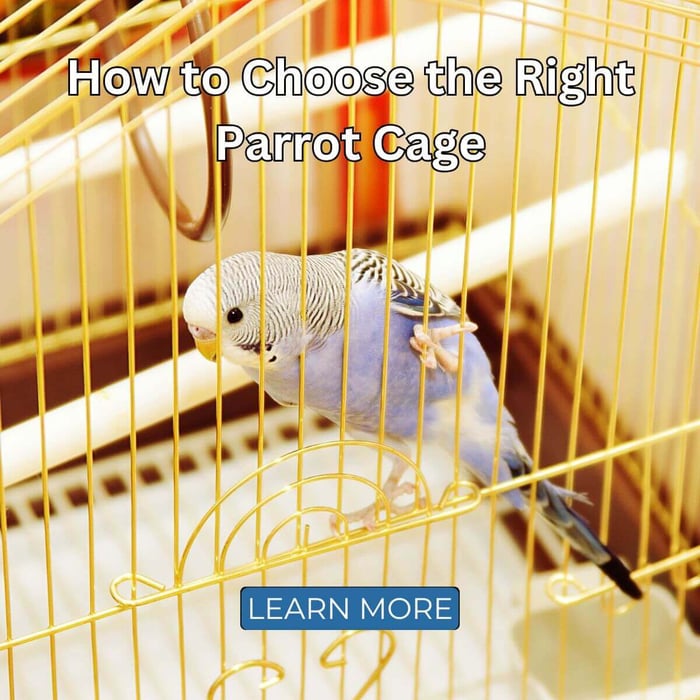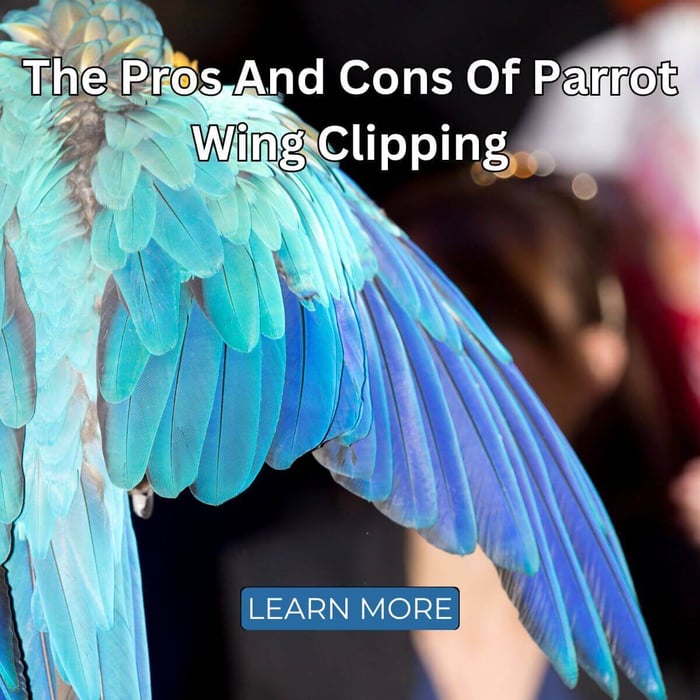10 Dos And Don'ts When Buying a Parrot
You are thinking of buying a parrot? Congratulations… Here are ten pointers that may be helpful in making the best choice for you and for the bird.
Are parrots different or difficult pets?
The answer is yes in both cases. They are not mammals. You cannot treat a parrot like a dog or a cat. And they are super intelligent. The derogatory epithet ‘bird brain’ has been disproved by scientists years ago. Not only for the ability of some species to communicate in human language but also for their problem-solving abilities and their long-term memories, parrots are way up near chimpanzees, elephants and cetaceans like orcas and dolphins.
They are difficult because, unlike dogs and cats, they are still essentially wild animals and nearer in their intrinsic nature to their wild cousins than dogs are to wolves or cats to tigers. And they can bite.
Which parrot will you choose?
There are 362 species of parrot. Almost every single species has been or is in captivity, and there are dozens of species to choose from.
Some species, like the Kia or Lear’s macaw, are generally found only in specialist collections. Others, like the largest macaw, the magnificent blue Hyacinth, can be obtained as a pet bird. The cost of parrots is due to their availability, not necessarily their suitability. The large macaws, the rarer conures, are very costly. Some cockatoos, like the Australian gang-gang and the Pesqet parrot, are never on the open market and can only be seen in collections like Loro Parc in Tenerife.
A prospective parrot owner needs to look carefully at their home environment and decide what sort of bird would be able to fit in. Have you got the space for a cage aviary and home that could accommodate busy beaks? A well-socialised African Grey could be happy in an ample kitchen and enjoy family time. A cockatoo who wants to chew wood, paper or anything else would be a disaster in an elegant sitting room furnished with antiques. Yet I have seen a sad Goffins confined 24/7 to a cage in such a room.
If you live anywhere near a sanctuary or a zoo which keeps parrots, getting to know various species and chatting with their handlers is invaluable. The best breeders will also let you meet and greet prospective young parrot pets.
Working out the cost – Parrot Cage
The biggest cost after buying a parrot is the cage. It is now illegal to purchase a cage too small for the bird to flap its wings. Many cages are too small. And many cages contain little more than a perch and a feeding bowl. Try to see the cage from a bird’s eye view. Wouldn’t you want it to be furnished with swings and suitable toys and have room to move around? Toys do not have to be a great expense since lots of parrot toys are made from simple household objects. Old paperbacks, egg boxes, tree branches and so on.
Food costs need to be factored in. Nowadays, the choice is immense, ranging from pelleted diets to seed mixes. Because I like to stay home with the birds, I get all their supplies from the internet. And, of course, you will be adding fresh fruit and vegetables. My birds love flowers, roses, and lilac, and gardeners or walkers like weeds like dandelions, docks, and chickweed. The list is endless. Hawthorn berries and rosehips are my favourite snacks for my flock. It is fun in a multi-bird household to discover different favourite items. Benni Macaw loves sea shells, and Casper Grey loves clumps of grass. Perdy Cockatoo loves a sunflower head.
In UK we do not seem to follow the USA pattern of yearly vet visits. But every parrot carer needs to know where is the nearest avian vet’s surgery and also what signs to look for in a sick bird.

Small is beautiful
Speaking with an avian vet at the 2015 Think Parrots show, he told me that many of his clients are going for the smaller species because homes are smaller and the upkeep is easier. Most of us know the budgerigar, the canary, and the cockatiel. Breeds like the smaller conures, the exquisitely beautiful parrotlets or any lovebird species can provide you with hours of entertainment. Among the medium-sized birds, the African grey and the Timneh are the most popular, followed closely by the Amazons. However, greys can develop plucking habits if everything is not quite right for them, and Amazons need careful handling in their breeding mode when they become aggressive.
First-time carers beware
Cockatoos are beautiful birds – every single one. They do not make good pets unless they have been properly reared and the new carer knows what they need. When they are unhappy, they bite, scream and pluck, and the hapless owner does not understand what happened to that teddy bear baby they used to cuddle. Macaws are less sensitive than cockatoos, but here again, their size makes it extremely difficult for them to stay in an average house or flat. They need a large aviary to exercise those magnificent wings. Most sanctuaries or bird rescues have many cockatoos especially males, who have been unable to adapt to our cramped style of living.
One, two or many
Birds are flock animals. In the forest, a parrot, unlike an owl or a hawk, will never be alone. Yet many domestic parrots have to spend half their waking hours in solitude. This goes against their nature. A young parrot adopted into a household will, if treated kindly, accept the human family members and even the dogs and cats to be his or her flock. Such a bird will often bond with one family member and consider that person to be his mate. A problem arises. When in breeding mode, he or she may attack anyone who comes near to his or her mate. My own lesser sulphur-crested cockatoo Perdy has been sure for ten years that Wal is her mate. If she is in his office on his shoulder, I would not dare to approach either of them. Away from her beloved, Perdy is a charming bird.
The answer is that a sole bird can adapt well but most expert opinion states that birds should have bird companions.
Training: How much do you need?
If your bird comes from a conscientious, caring breeder, it will probably know a few basic commands. I think that it is essential that every pet bird understands the basic request of step up. We need the step up to take the bird in and out of the cage for its recreational time with its family. Positive reinforcement training, which is based on the well-tested principles of behaviour science, is the best way forward. In the UK, we do not yet have parrot training classes as we do dog training, but you can find good DVDs and books to help you gain an understanding of the basic principles.
Clipping
I hope this unnecessary and in my opinion cruel practice is in decline. However there are still people who advocate it and still people prepared to do it. Bobo an Umbrella cockatoo came to me with her wings AND tail cropped off. When you see something that exaggerated you wonder at the owner’s common sense. Without flying a bird cannot fulfil one of its basic instincts. As Rosemary Low once remarked, if you do not want a flying pet, get a rabbit.
The Future
Most parrots will not die in the home of their first carer. This is because a parrot can live for 20 in the case of the smaller birds, up to 50 or 60 in the case of Greys, Amazons, cockatoos and macaws. Before buying a parrot, are you sure you have someone to take care of it when you no longer can?
Do your research, choose the right species, and adapt the environment to suit both of you. Your bird will repay you a thousandfold.




